
Graeme Lyons
@graemelyons.bsky.social
Freelance entomologist specialising in reserve management, conservation grazing, rewilding & farming. 2nd place pan-species listing. Spiders. Bugs. Grew up below poverty line. AuDHD. Writing this https://pelagicpublishing.com/products/pan-species-listing
Pinned

My book has got a great endorsement from Chris Packham: "This clever and immensely resourceful book is an overdue gem". There's also a few pages up on the website too! It's up for pre-order here with publication set for January pelagicpublishing.com/products/pan...
#speciesaday no. 669 is Trapania tartanella. Another recent colonist and I found this at Seaview on the I of W the day after finding Aulonia. It's only the 2nd record for the island. I knew it was different straight away as the yellow patches grade into orange at the tips - like little flames!
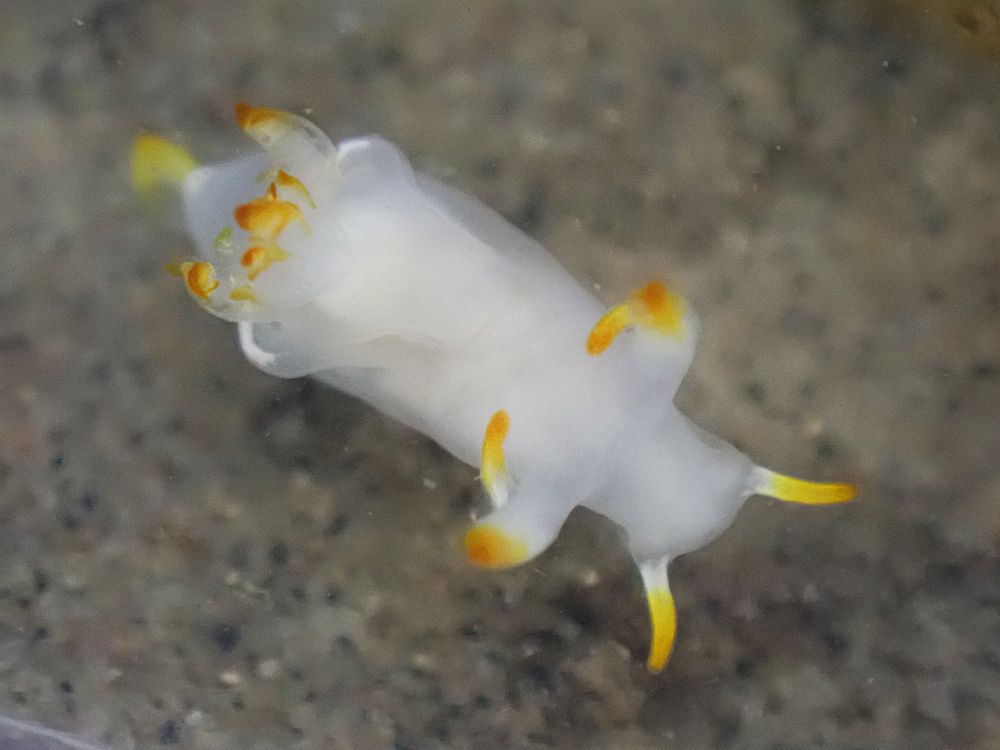

November 11, 2025 at 8:30 AM
#speciesaday no. 669 is Trapania tartanella. Another recent colonist and I found this at Seaview on the I of W the day after finding Aulonia. It's only the 2nd record for the island. I knew it was different straight away as the yellow patches grade into orange at the tips - like little flames!
My friend Penny Green has started a new podcast over the last few months, I recorded this with her back in July and it's just been released. I was surveying the arable margins for invertebrates on the Wiston Estate. It's a great listen.

Marginal Gains - The Wandering Ecologist Podcast
Episode 5 takes us on top of the South Downs at the Wiston Estate where I join awesome entomologist, Graeme Lyons, on some invertebrate surveys. We’re looking at the benefits of having wildflower stri...
thewanderingecologistpodcast.buzzsprout.com
November 10, 2025 at 1:31 PM
My friend Penny Green has started a new podcast over the last few months, I recorded this with her back in July and it's just been released. I was surveying the arable margins for invertebrates on the Wiston Estate. It's a great listen.
#speciesaday no. 668 is the Orange-clubbed Sea Slug (Limacia clavigera). This fairly common nudi was one I had not connected with until Thursday. I saw 2 at Silver Steps and at least another 2 at Gylly Reef (both Falmouth). This one feeds on bryozoans. I love the white ones with yellow accessories!

November 10, 2025 at 6:48 AM
#speciesaday no. 668 is the Orange-clubbed Sea Slug (Limacia clavigera). This fairly common nudi was one I had not connected with until Thursday. I saw 2 at Silver Steps and at least another 2 at Gylly Reef (both Falmouth). This one feeds on bryozoans. I love the white ones with yellow accessories!
1/2 #speciedsaday no. 667 is Hair-curler Sea Slug (Spurilla neapolitana). Found only new to the UK just over two months ago, this thing is spreading and FAST. I had it three days in a row in Cornwall (four individuals). It is quite an outstanding looking nudi, big too. There is a lot going on here.



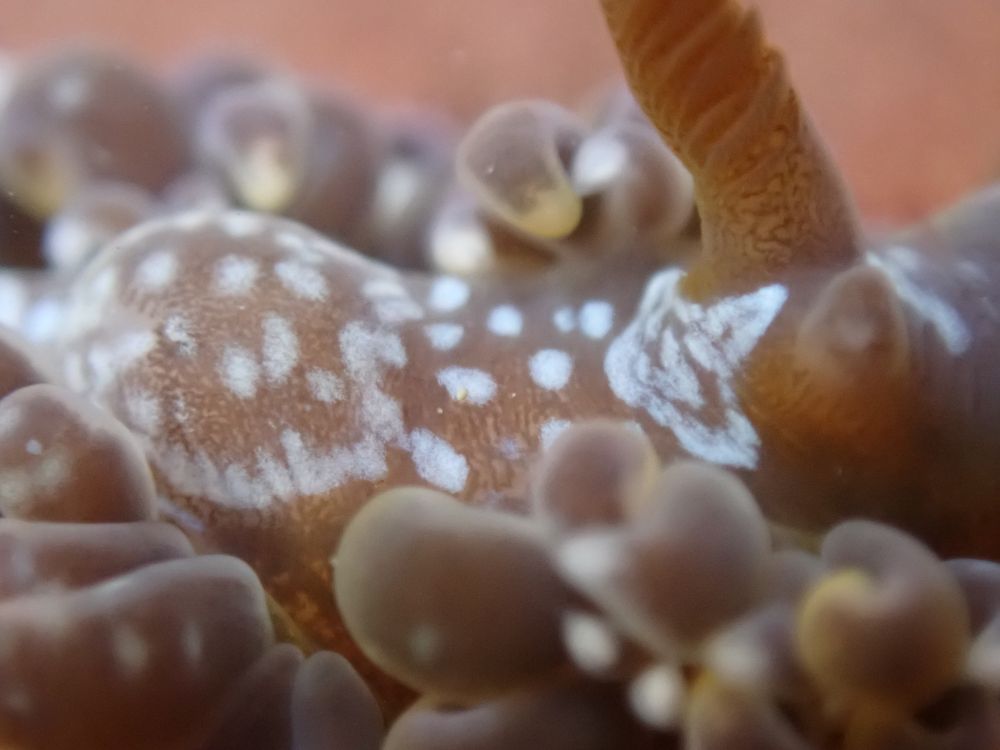
November 9, 2025 at 11:34 AM
1/2 #speciedsaday no. 667 is Hair-curler Sea Slug (Spurilla neapolitana). Found only new to the UK just over two months ago, this thing is spreading and FAST. I had it three days in a row in Cornwall (four individuals). It is quite an outstanding looking nudi, big too. There is a lot going on here.
Reposted by Graeme Lyons

November 7, 2025 at 8:04 PM
Wow, we found an even bigger and brighter one!!! analternativenaturalhistoryofsussex.blogspot.com/2025/11/how-...

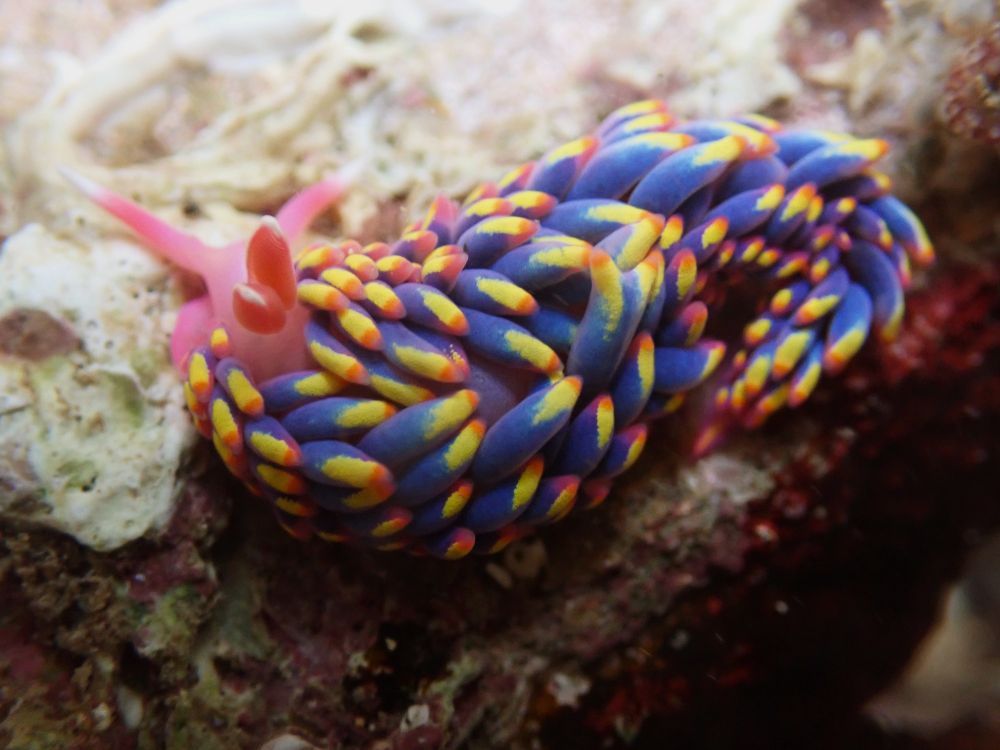


November 7, 2025 at 4:43 PM
Wow, we found an even bigger and brighter one!!! analternativenaturalhistoryofsussex.blogspot.com/2025/11/how-...
Only just this morning entered all of my field data from the summer, 38,879 records entered in 2025. I still have a lot of casual, garden moth trap and Jersey records (and most of my specimens) to add to this. You can see the big study on inverts in arable margins on the Norfolk & Wiston Estates.

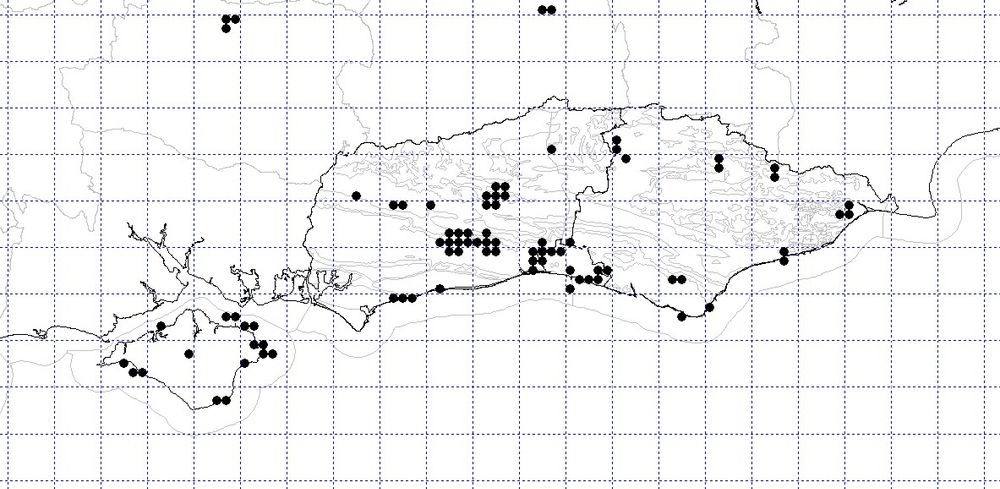
November 7, 2025 at 10:29 AM
Only just this morning entered all of my field data from the summer, 38,879 records entered in 2025. I still have a lot of casual, garden moth trap and Jersey records (and most of my specimens) to add to this. You can see the big study on inverts in arable margins on the Norfolk & Wiston Estates.
1/2 #speciesaday no. 666 (weirdly also my 9,666th species in the BI) is Rainbow Sea Slug (Babakina anadoni). A pair found under a rock at Silver Steps, Falmouth yesterday! Utterly mind blowing, easily a contender for the highlight of the year. My 35th nudibranch and 258th mollusc.



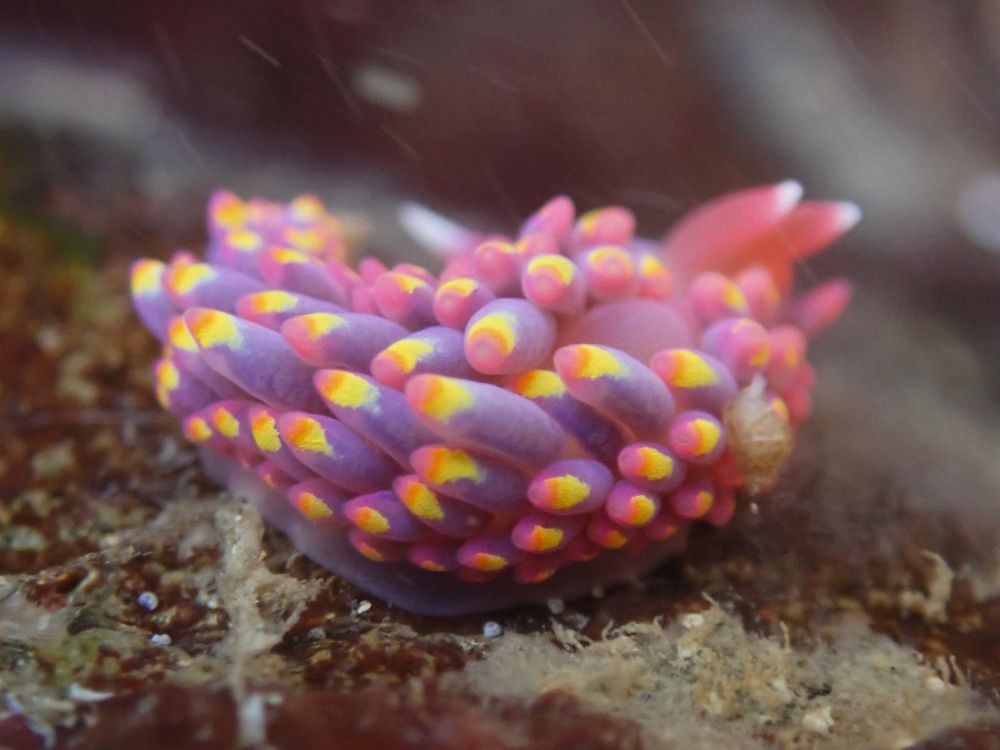
November 7, 2025 at 10:19 AM
1/2 #speciesaday no. 666 (weirdly also my 9,666th species in the BI) is Rainbow Sea Slug (Babakina anadoni). A pair found under a rock at Silver Steps, Falmouth yesterday! Utterly mind blowing, easily a contender for the highlight of the year. My 35th nudibranch and 258th mollusc.
Well that was pretty darned awesome. BABAKINA!!!
analternativenaturalhistoryofsussex.blogspot.com/2025/11/chas...
analternativenaturalhistoryofsussex.blogspot.com/2025/11/chas...




November 6, 2025 at 4:35 PM
Well that was pretty darned awesome. BABAKINA!!!
analternativenaturalhistoryofsussex.blogspot.com/2025/11/chas...
analternativenaturalhistoryofsussex.blogspot.com/2025/11/chas...
Reposted by Graeme Lyons
Singularly impressive bird-finding and rarity-documentation - a visibly-migrating Black-faced Bunting photographed this morning in the Netherlands 🪶
www.dutchbirding.nl/gallery/deta...
www.dutchbirding.nl/gallery/deta...

November 5, 2025 at 1:35 PM
Singularly impressive bird-finding and rarity-documentation - a visibly-migrating Black-faced Bunting photographed this morning in the Netherlands 🪶
www.dutchbirding.nl/gallery/deta...
www.dutchbirding.nl/gallery/deta...
1/2 #speciedsaday no. 665 is Pachygnatha clercki. A fairly common spider in wetlands and damp grasslands but it can occasionally turn up in odd places, like arable margins. Larger, yellower and much less common than the ubiquitous P. degeeri. Almost always found by suction for much of the year.

November 5, 2025 at 4:26 PM
1/2 #speciedsaday no. 665 is Pachygnatha clercki. A fairly common spider in wetlands and damp grasslands but it can occasionally turn up in odd places, like arable margins. Larger, yellower and much less common than the ubiquitous P. degeeri. Almost always found by suction for much of the year.
Reposted by Graeme Lyons
My 3rd record for Walckenaeria obtusa at this woodland site, all 3 have been in moss under pines, all my W.nudipalpis records from that site are from leaf litter under sweet chestnut trees.
@britishspiders.bsky.social
@tylanberry.bsky.social
@graemelyons.bsky.social
@britishspiders.bsky.social
@tylanberry.bsky.social
@graemelyons.bsky.social

November 5, 2025 at 3:42 PM
My 3rd record for Walckenaeria obtusa at this woodland site, all 3 have been in moss under pines, all my W.nudipalpis records from that site are from leaf litter under sweet chestnut trees.
@britishspiders.bsky.social
@tylanberry.bsky.social
@graemelyons.bsky.social
@britishspiders.bsky.social
@tylanberry.bsky.social
@graemelyons.bsky.social
1/2 #speciesaday no. 664 is Agramma laeta. A TINY (2 to 2.5 mm) rather atypical lacebug that I always thought was pretty much restricted to untouched chalk-grassland. At the weekend, I found quite a few in the species-rich chalk-grassland at High Beech gardens, along with other such inverts.

November 4, 2025 at 11:48 AM
1/2 #speciesaday no. 664 is Agramma laeta. A TINY (2 to 2.5 mm) rather atypical lacebug that I always thought was pretty much restricted to untouched chalk-grassland. At the weekend, I found quite a few in the species-rich chalk-grassland at High Beech gardens, along with other such inverts.
1/2 #speciesaday no. 663 is Clouded Yellow (Colias croceus). A migratory butterfly (although I have seen a freshly emerged adult at Rye Harbour). Most appear egg-yellow in flight (as opposed to sulphur of Brimstone). Fairly frequent but always exciting. This one was yesterday, my latest record.

November 3, 2025 at 12:58 PM
1/2 #speciesaday no. 663 is Clouded Yellow (Colias croceus). A migratory butterfly (although I have seen a freshly emerged adult at Rye Harbour). Most appear egg-yellow in flight (as opposed to sulphur of Brimstone). Fairly frequent but always exciting. This one was yesterday, my latest record.
1/2 #speciesaday no. 662 is Cryptocephalus moraei. A very smart leaf beetle that feeds on St John's-worts, as such it is commonest on the chalk but can appear where ever they grow. I have records between 3rd May and 12th August.

November 2, 2025 at 9:39 AM
1/2 #speciesaday no. 662 is Cryptocephalus moraei. A very smart leaf beetle that feeds on St John's-worts, as such it is commonest on the chalk but can appear where ever they grow. I have records between 3rd May and 12th August.
1/2 #speciesaday no. 661 is Plaited Door Snail (Cochlodina laminata). A large door snail, typically found in base-rich woodland on trees and under fallen logs. Saw quite a few at Lion's Bank, Wiston Estate today.

November 1, 2025 at 7:02 PM
1/2 #speciesaday no. 661 is Plaited Door Snail (Cochlodina laminata). A large door snail, typically found in base-rich woodland on trees and under fallen logs. Saw quite a few at Lion's Bank, Wiston Estate today.
Shout out to all those yesterday who wrote the name correctly as I wrote it in my blog. It's White-knuckled Wolf Spider, not white-knuckled wolf spider. I'm so sick of having species names 'corrected' in such a way. I've written a significant section in my book explaining how to write them correctly
October 31, 2025 at 8:28 AM
Shout out to all those yesterday who wrote the name correctly as I wrote it in my blog. It's White-knuckled Wolf Spider, not white-knuckled wolf spider. I'm so sick of having species names 'corrected' in such a way. I've written a significant section in my book explaining how to write them correctly
The last time I did live TV on BBC 1 was 15 years ago and got me an entry on IMDB! Still had my 2nd dreads then. And I still have that coat, it's falling to bit but still sort of functions.

October 31, 2025 at 7:14 AM
The last time I did live TV on BBC 1 was 15 years ago and got me an entry on IMDB! Still had my 2nd dreads then. And I still have that coat, it's falling to bit but still sort of functions.
The last 48 hours has been a bit of a blur. 3 pre-recorded interviews, Radio Solent live, BBC New Channel live and BBC Breakfast live yday at 6.50 am in Manchester. All down to Mark Telfer and I refinding Aulonia albimana on the Isle of Wight after an absence of 40 years! Now I need to do some work!

October 31, 2025 at 5:55 AM
The last 48 hours has been a bit of a blur. 3 pre-recorded interviews, Radio Solent live, BBC New Channel live and BBC Breakfast live yday at 6.50 am in Manchester. All down to Mark Telfer and I refinding Aulonia albimana on the Isle of Wight after an absence of 40 years! Now I need to do some work!
1/2 #speciesaday no. 660 is Arctosa fulvolineata. Nationally Rare, Near Threatened and Section 41. The other mega spider that Mark Telfer found (1st photo is his image) on the Aulonia day but didn't get a look in with all the publicity yesterday. New to the Isle of Wight! A real saltmarsh specialist


October 31, 2025 at 5:31 AM
1/2 #speciesaday no. 660 is Arctosa fulvolineata. Nationally Rare, Near Threatened and Section 41. The other mega spider that Mark Telfer found (1st photo is his image) on the Aulonia day but didn't get a look in with all the publicity yesterday. New to the Isle of Wight! A real saltmarsh specialist
1/3 #speciesaday no. 659 is Common Carp (Cyprinus carpio). A large, long-lived freshwater fish introduced here centuries ago. Omnivorous and incredibly destructive to plant and invertebrate life in ponds. The lake at Woods Mill used to look like chocolate milk shake until they were removed.
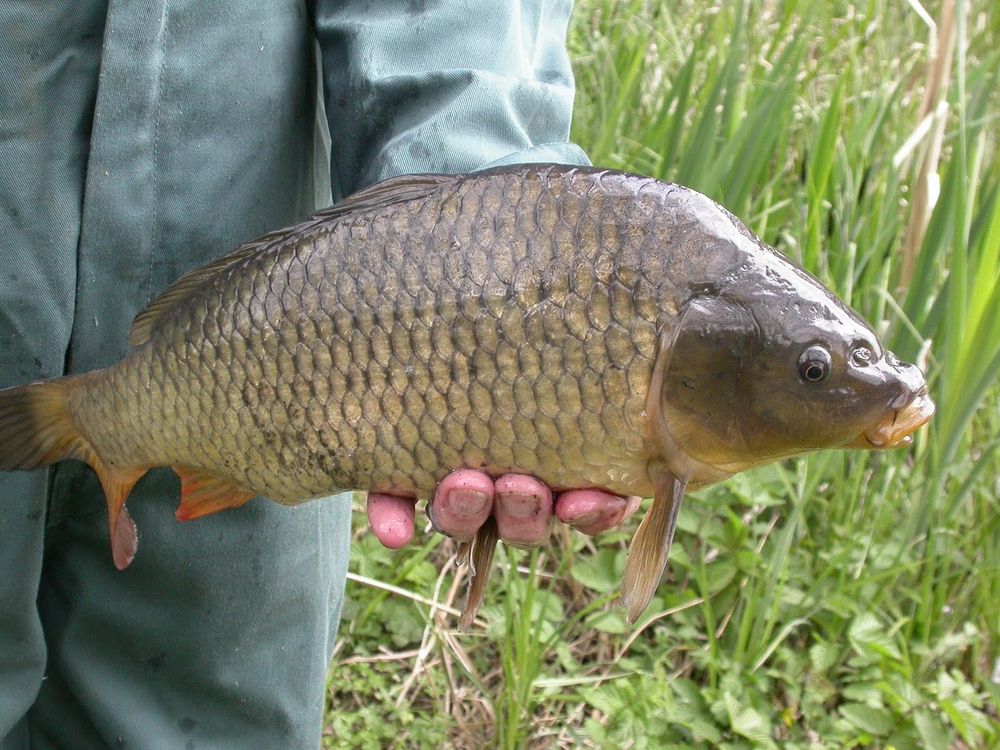
October 29, 2025 at 6:06 AM
1/3 #speciesaday no. 659 is Common Carp (Cyprinus carpio). A large, long-lived freshwater fish introduced here centuries ago. Omnivorous and incredibly destructive to plant and invertebrate life in ponds. The lake at Woods Mill used to look like chocolate milk shake until they were removed.
1/2 #speciesaday no. 658 is Neocochylis hybridella. A smart bird dropping mimic cochylid (a type of tortrix). Some nice red markings and a whitish head and thorax make this one fairly easy to ID. This one was found at rest at West Beach earlier this year.

October 28, 2025 at 6:36 AM
1/2 #speciesaday no. 658 is Neocochylis hybridella. A smart bird dropping mimic cochylid (a type of tortrix). Some nice red markings and a whitish head and thorax make this one fairly easy to ID. This one was found at rest at West Beach earlier this year.
#speciesday no. is Yellow-foot Waxcap (Cuphophyllus flavipes). An uncommon waxcap with a drab blotchy greyish cap but the pale yellow stem base & decurrent gills are diagnostic. After twitching them at Henfield Churchyard, I've since
found my own at Ebernoe Cricket Pitch (this one) and High Beeches.
found my own at Ebernoe Cricket Pitch (this one) and High Beeches.


October 27, 2025 at 7:09 AM
#speciesday no. is Yellow-foot Waxcap (Cuphophyllus flavipes). An uncommon waxcap with a drab blotchy greyish cap but the pale yellow stem base & decurrent gills are diagnostic. After twitching them at Henfield Churchyard, I've since
found my own at Ebernoe Cricket Pitch (this one) and High Beeches.
found my own at Ebernoe Cricket Pitch (this one) and High Beeches.
1/3 #speciesaday is Snow Bunting (Plectrophenax nivalis). Breeds in the mountains, winters (mainly) on the coast. Love seeing the big flocks at Cley and other sites along the North Norfolk coast with their 'toffee cheeks'. This one was from the very top of Snowdon back in 2010...
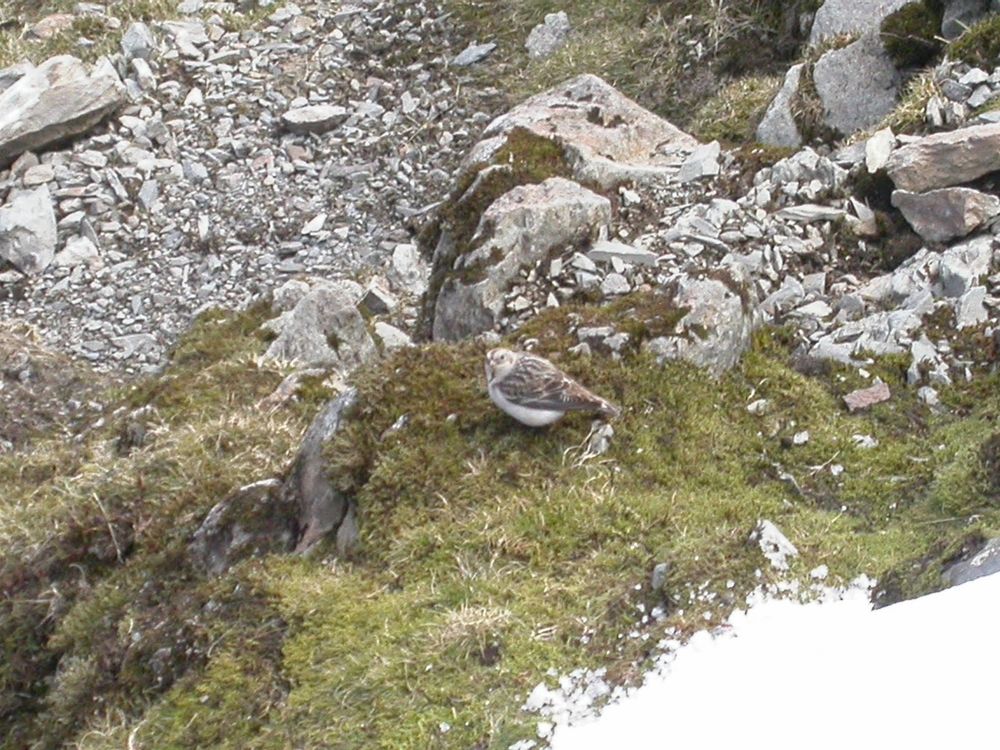
October 26, 2025 at 6:41 AM
1/3 #speciesaday is Snow Bunting (Plectrophenax nivalis). Breeds in the mountains, winters (mainly) on the coast. Love seeing the big flocks at Cley and other sites along the North Norfolk coast with their 'toffee cheeks'. This one was from the very top of Snowdon back in 2010...
#speciesaday no. 655 is Orange Grisette (Amanita crocea). I have only ever seen this at one place, Ebernoe Cricket Pitch and then not every year. It was up last week but looking a little dried out (this is a photo from 31st Oct 20015!). It is associated with birch. I think it must be 'uncommon'.

October 25, 2025 at 6:21 AM
#speciesaday no. 655 is Orange Grisette (Amanita crocea). I have only ever seen this at one place, Ebernoe Cricket Pitch and then not every year. It was up last week but looking a little dried out (this is a photo from 31st Oct 20015!). It is associated with birch. I think it must be 'uncommon'.

